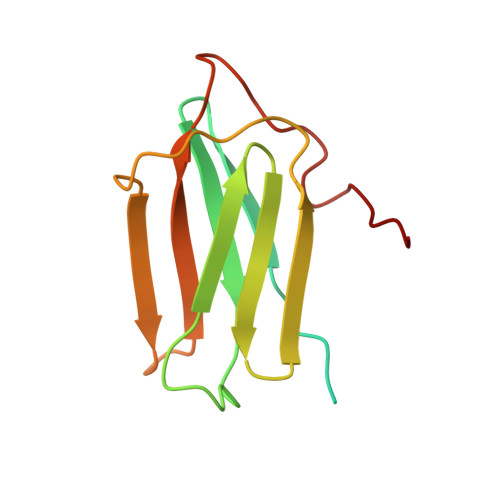Structure and Interactions of the CS Domain of Human H/ACA RNP Assembly Protein Shq1.
Singh, M., Wang, Z., Cascio, D., Feigon, J.(2015) J Mol Biol 427: 807-823
- PubMed: 25553844
- DOI: https://doi.org/10.1016/j.jmb.2014.12.012
- Primary Citation of Related Structures:
2MNW, 4PBD, 4PCK - PubMed Abstract:
Shq1 is an essential protein involved in the early steps of biogenesis and assembly of H/ACA ribonucleoprotein particles (RNPs). Shq1 binds to dyskerin (Cbf5 in yeast) at an early step of H/ACA RNP assembly and is subsequently displaced by the H/ACA RNA. Shq1 contains an N-terminal CS and a C-terminal Shq1-specific domain (SSD). Dyskerin harbors many mutations associated with dyskeratosis congenita. Structures of yeast Shq1 SSD bound to Cbf5 revealed that only a subset of these mutations is in the SSD binding site, implicating another subset in the putative CS binding site. Here, we present the crystal structure of human Shq1 CS (hCS) and the nuclear magnetic resonance (NMR) and crystal structures of hCS containing a serine substitution for proline 22 that is associated with some prostate cancers. The structure of hCS is similar to yeast Shq1 CS domain (yCS) and consists of two β-sheets that form an immunoglobulin-like β-sandwich fold. The N-terminal affinity tag sequence AHHHHHH associates with a neighboring protein in the crystal lattice to form an extra β-strand. Deletion of this tag was required to get spectra suitable for NMR structure determination, while the tag was required for crystallization. NMR chemical shift perturbation (CSP) experiments with peptides derived from putative CS binding sites on dyskerin and Cbf5 revealed a conserved surface on CS important for Cbf5/dyskerin binding. A HADDOCK (high-ambiguity-driven protein-protein docking) model of a Shq1-Cbf5 complex that defines the position of CS domain in the pre-H/ACA RNP was calculated using the CSP data.
Organizational Affiliation:
Department of Chemistry and Biochemistry, University of California, Los Angeles, CA 90095, USA.














